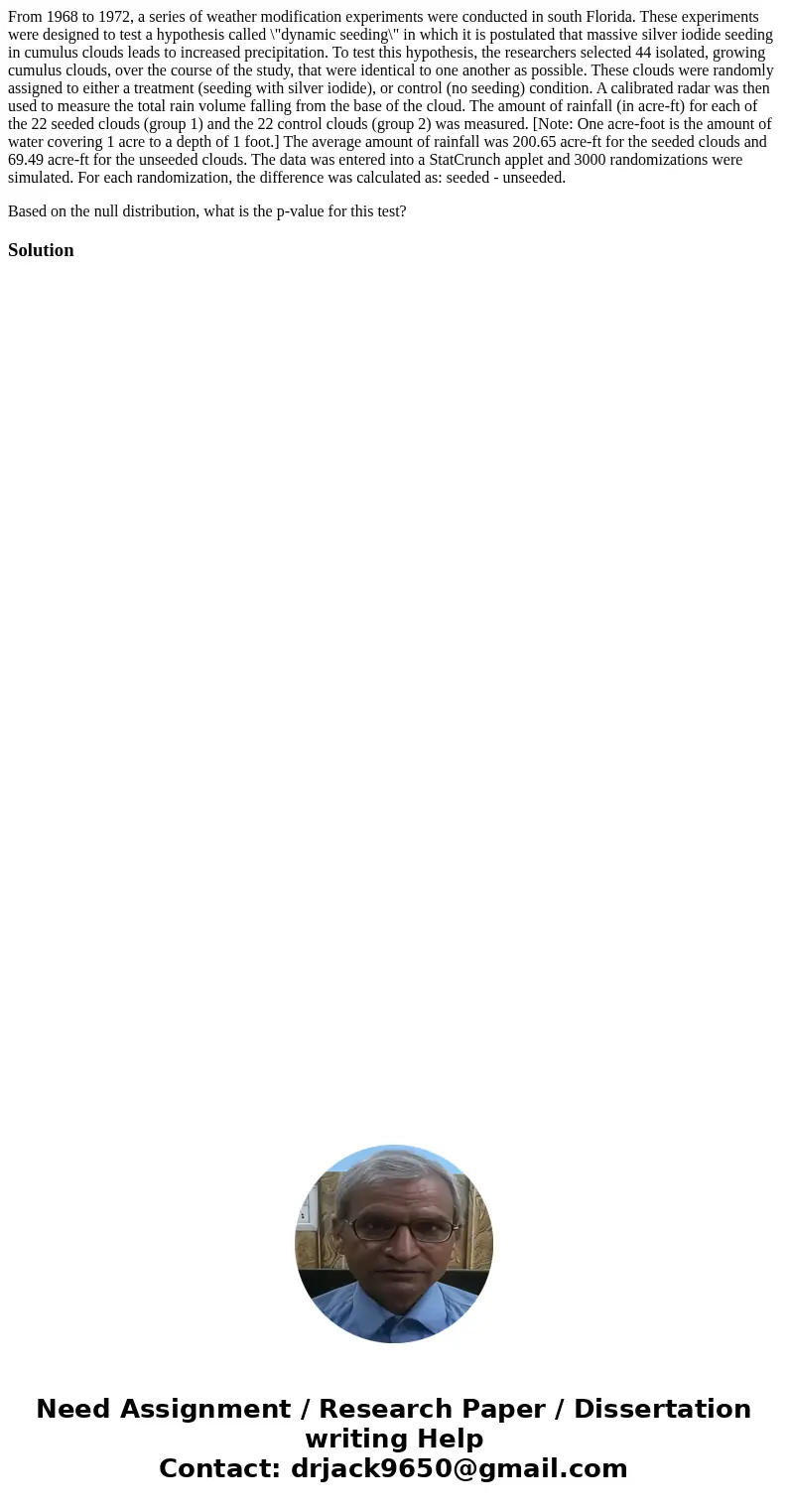From 1968 to 1972 a series of weather modification experimen
From 1968 to 1972, a series of weather modification experiments were conducted in south Florida. These experiments were designed to test a hypothesis called \"dynamic seeding\" in which it is postulated that massive silver iodide seeding in cumulus clouds leads to increased precipitation. To test this hypothesis, the researchers selected 44 isolated, growing cumulus clouds, over the course of the study, that were identical to one another as possible. These clouds were randomly assigned to either a treatment (seeding with silver iodide), or control (no seeding) condition. A calibrated radar was then used to measure the total rain volume falling from the base of the cloud. The amount of rainfall (in acre-ft) for each of the 22 seeded clouds (group 1) and the 22 control clouds (group 2) was measured. [Note: One acre-foot is the amount of water covering 1 acre to a depth of 1 foot.] The average amount of rainfall was 200.65 acre-ft for the seeded clouds and 69.49 acre-ft for the unseeded clouds. The data was entered into a StatCrunch applet and 3000 randomizations were simulated. For each randomization, the difference was calculated as: seeded - unseeded.
Based on the null distribution, what is the p-value for this test?
Solution

 Homework Sourse
Homework Sourse